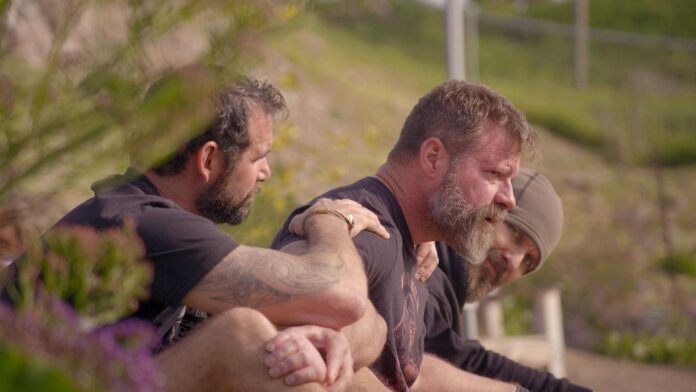“In Waves and War,” a gripping new documentary now streaming on Netflix, shines a light on an unconventional treatment gaining traction within the veteran community: psychedelic therapy. The film follows a group of Navy SEALs grappling with debilitating PTSD, traumatic brain injuries, and severe depression – conditions that conventional treatments have failed to alleviate. Driven to their breaking point, some contemplate suicide, leading them to seek out a clinic in Mexico offering ibogaine therapy. This unconventional approach becomes the focus of the documentary, which captures their harrowing journeys toward healing.
The film’s impact has resonated far beyond Netflix. It recently screened for the Texas State Legislature, culminating in a significant decision: lawmakers approved $50 million in state funding to support clinical trials investigating ibogaine as a potential treatment option.
Directed by Jon Shenk and Bonni Cohen (known for impactful documentaries like “Athlete A,” “Lost Boys of Sudan,” and “Audrie & Daisy”), “In Waves and War” stands out as their most intricate and personally rewarding project. The filmmakers took time to discuss the film’s genesis, its development, and the unique challenges inherent in bringing this sensitive subject to the screen.
Building Trust Within a Tight-Knit Community
The journey began in 2019 through an introduction by Executive Producer Jamis MacNiven to Amber and Marcus Capone. Marcus, a retired Navy SEAL, had publicly shared his experience with psychedelic therapy as a last resort against debilitating symptoms stemming from 13 years of deployments in Afghanistan and Iraq. These included PTSD, traumatic brain injuries, anxiety, and depression.
Gaining access into the world of Navy SEALs proved challenging. This intensely private community is notorious for its reluctance to openly discuss experiences within its ranks. The filmmakers meticulously built trust over months by interviewing veterans who had sought ibogaine and 5-MeO-DMT therapy in Mexico. Ultimately, they chose to center their narrative on Marcus Capone and a close-knit group of SEALs he trained with and served alongside.
“A powerful motivating force for these veterans was their desire to help one another,” Shenk explains. “In the field, they learn that no one gets left behind. In the film, that ethos drives a new kind of battle: confronting the suicide epidemic among veterans.”
Capturing Authenticity Through Animation and Hesitant Participants
Choosing the right SEALs for the film was crucial. Cohen explains that early on, Amber Capone emphasized the need to find veterans who were initially reluctant to participate—a characteristic deeply ingrained in SEAL culture, where humility is valued above all else. Finding someone who hadn’t yet undergone psychedelic therapy was also key to documenting the transformative process firsthand.
The film introduces viewers to DJ Shipley and Matty Roberts alongside Marcus Capone. Matty initially resisted both treatment and filming but ultimately agreed to participate, resulting in a raw and deeply personal journey captured on screen.
One of the most significant challenges lay in depicting the profoundly subjective experience of psychedelic therapy. Shenk notes, “We wanted to represent those moments as accurately and respectfully as possible, but there was nothing we could film directly.” This creative roadblock became a breakthrough: animators were brought on board to visually depict the ibogaine experience, offering a unique and compelling way to communicate these profound inner landscapes.
A Beacon of Hope and A Call for Change
“In Waves and War” transcends the realm of entertainment; it functions as a powerful call to action. By shedding light on the struggles of veterans seeking unconventional treatments, the film challenges societal perceptions surrounding mental health within the military community. The Texas State Legislature’s decisive vote underscores the growing recognition of psychedelic therapy’s potential for addressing the critical needs of veterans struggling with invisible wounds. The documentary serves as a potent reminder that innovative solutions are often found outside traditional medical paradigms, offering hope where conventional treatments have failed.




















